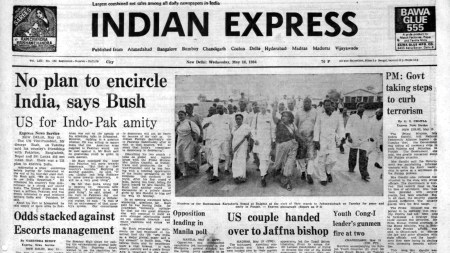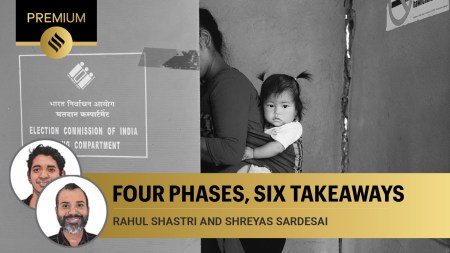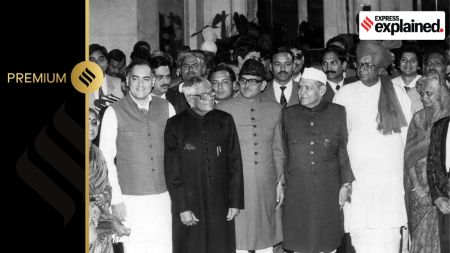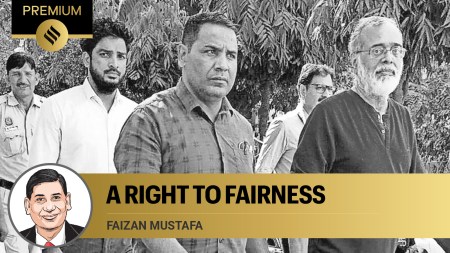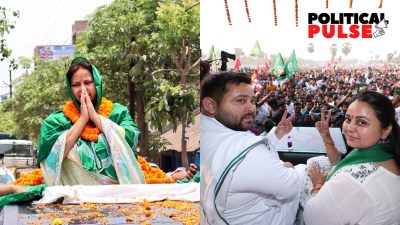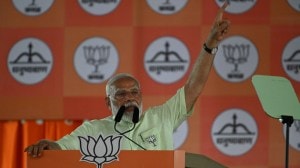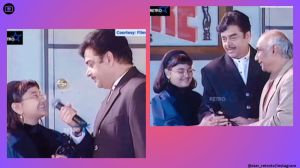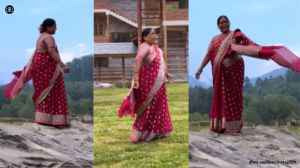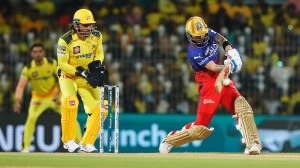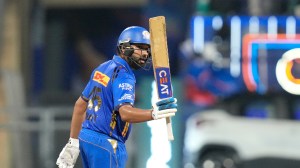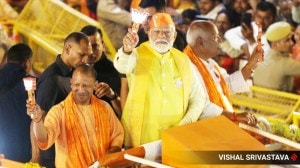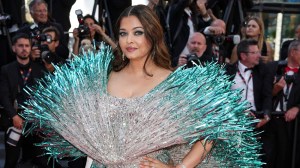- India
- International
Manu Bhandari — ‘She gave the Hindi literary world pragmatic, bold heroines’
Bhandari, on whose stories popular films Rajnigandha (1974) and Swami (1977) were based, passed away on Monday in Gurgaon. She was 90.
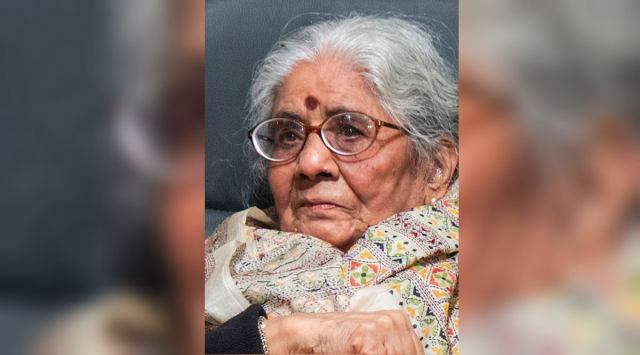 Born in Madhya Pradesh in 1931, Mannu Bhandari
grew up in a literary household in Ajmer. (Photo: Wikimedia Commons)
Born in Madhya Pradesh in 1931, Mannu Bhandari
grew up in a literary household in Ajmer. (Photo: Wikimedia Commons)ONE OF the main architects of the ‘Nayi Kahaani’ movement that dominated Hindi literature in a newly independent India, Mannu Bhandari’s novels, Aapka Bunty, Mahabhoj and stories such as Ek Plate Sailab, Teen Nigahon Ki Ek Tasvir, Trishanku, and Aankhon Dekha Jhooth, spoke about a new India that was dealing with an emerging middle class and individualism.
Bhandari, on whose stories popular films Rajnigandha (1974) and Swami (1977) were based, passed away on Monday in Gurugram. She was 90. She is survived by her daughter Rachana Yadav.
Born in Madhya Pradesh in 1931, Bhandari grew up in a literary household in Ajmer. Her father Sukhsampat Rai was a freedom fighter who put together one of the first English to Hindi and English to Marathi dictionaries. Bhandari penned her first individual literary work in 1957, the story Main Haar Gayi. Earlier, she had worked on a novel Ek Inch Muskaan, with her husband, fellow writer Rajendra Yadav.
“What one needs to remember is that Mannu Bhandari gave the Hindi literary world heroines that were pragmatic and bold at the same time. They made their own decisions, and they were also working women. This in the 60-70s, when Bhandari was writing, this was very new. We had never seen or heard of such heroines before,” said Hindi novelist Prabhat Ranjan.
Bhandari studied at Calcutta University and went on to get a masters degree in Hindi Literature from Banaras Hindu University. She started her career as a Hindi teacher at Kolkata’s Ballygunge Shiksha Sadan and later taught Hindi literature at Miranda House, Delhi University, till 1991.

“I remember meeting her often in Delhi University in the early 90s when she was teaching at Miranda House and I was studying at Hindu College. For us new writers, to have access to someone like her at such an early age, was a very big thing. She was very humble and approachable, and would notice almost everything about everyone, right from the very shirt one would be wearing. I think she incorporated all that she saw in her works,” said Ranjan.
Bhandari was married to editor Rajendra Yadav, a literary stalwart himself, but stood out on her own. In her introduction of The Best of Mannu Bhandari: The Wise Woman and Other Stories (2021, Roli Books), translated from Hindi by Vidya Pradhan, writer Namita Gokhale says, “She was never flattened into the shadows by her husband’s fame and charisma, but resolutely pursued her own substantial writing career. The literary milieu around her was alive with excitement. Writers like Nirmal Verma, Mohan Rakesh, Kamleshwar, Krishna Sobti, Bhisham Sahni, Usha Priyamvada, and of course she herself with her husband Rajendra Yadav, were determinedly reinterpreting the narratives of their times.”
While Bhandari is often remembered for her strong heroines, her literary oeuvre traversed the personal and the political. The short story Yahi Sach Hai dealt with a woman torn between two lovers, the novel Aapka Bunty captured the toll a divorce takes upon a child while Mahabhoj spoke about the nexus of politics and crime, and was based on the Belchhi massacre.
“Mannu Bhandari was a good writer, period. I will not slot her as a ‘feminist’ writer alone. She was married to another writer – Rajendra Yadav – who was also a demanding, and at times a difficult husband. A talented couple, who both had different literary styles. She was a lot more successful, and her work was also disseminated a lot more through different mediums like films,” said author and journalist Mrinal Pande.
“I knew her as an affectionate elder, who encouraged me, not just as a woman, but as a writer. She was also very unsparing of fools. To my mind, she was a very gentle and kind soul, and yet her work was very hard hitting. Look at Mahabhoj, how she spoke about a new Indian middle class.”
May 18: Latest News
- 016 hours ago
- 028 hours ago
- 038 hours ago
- 048 hours ago
- 058 hours ago



